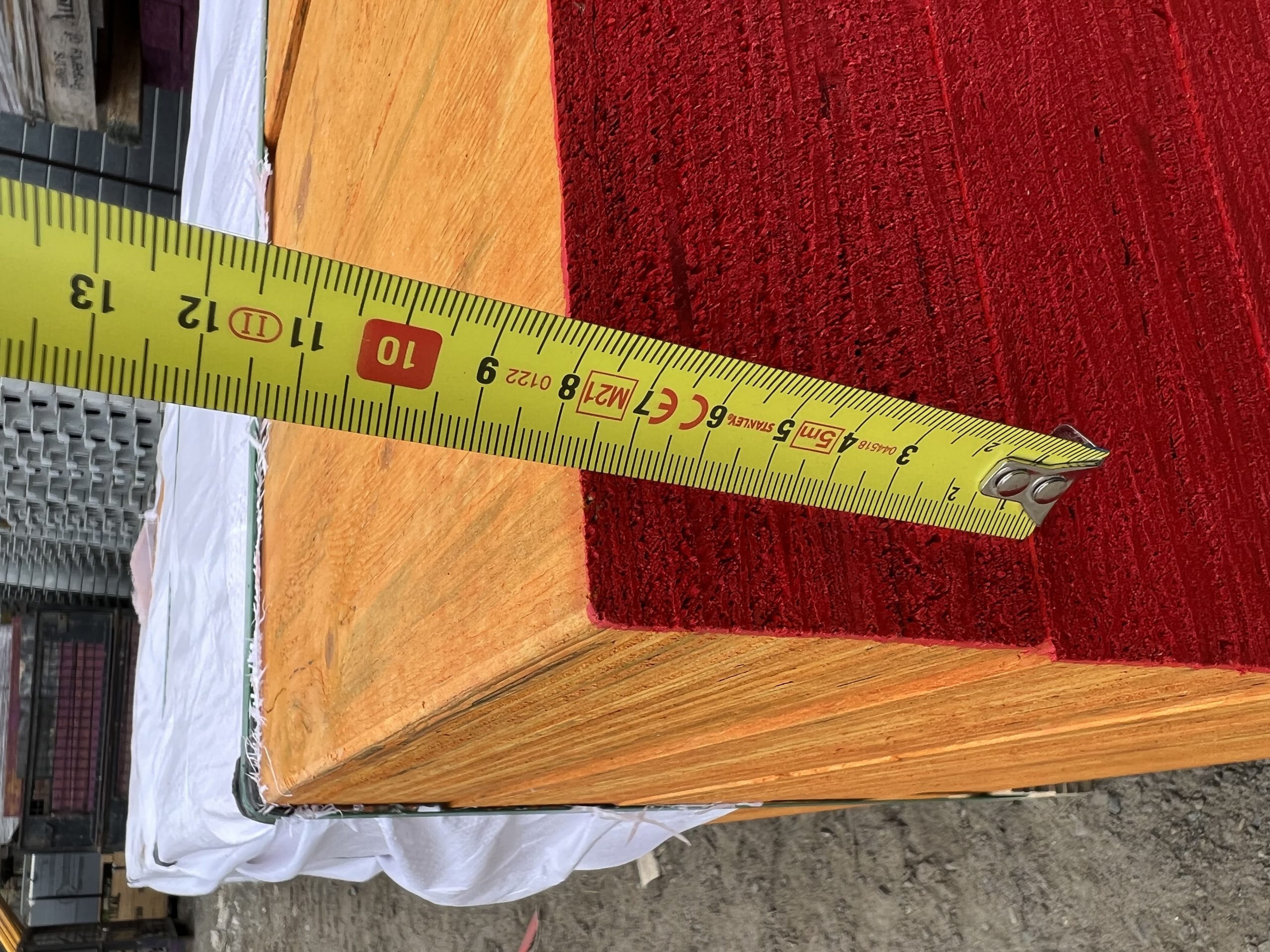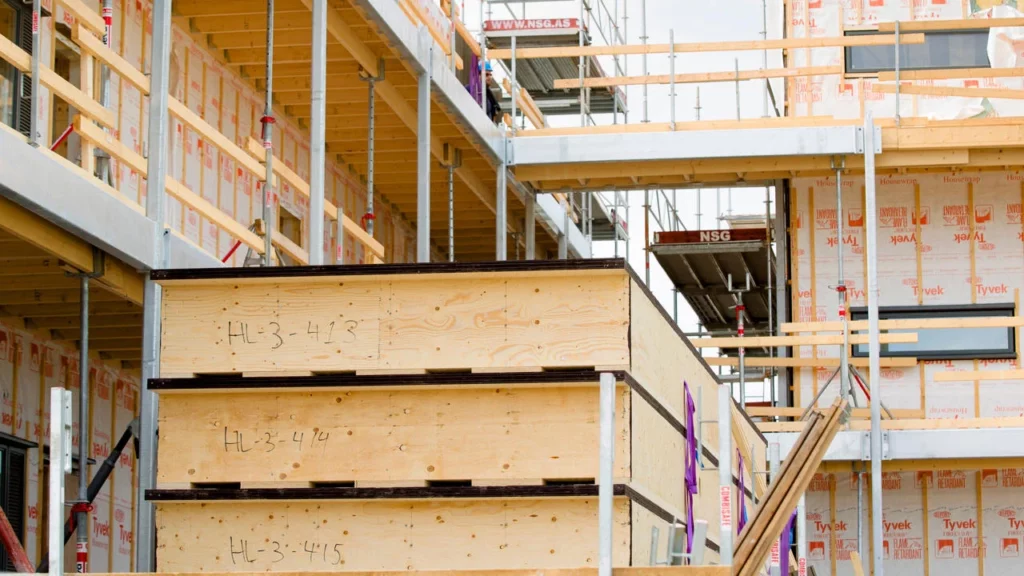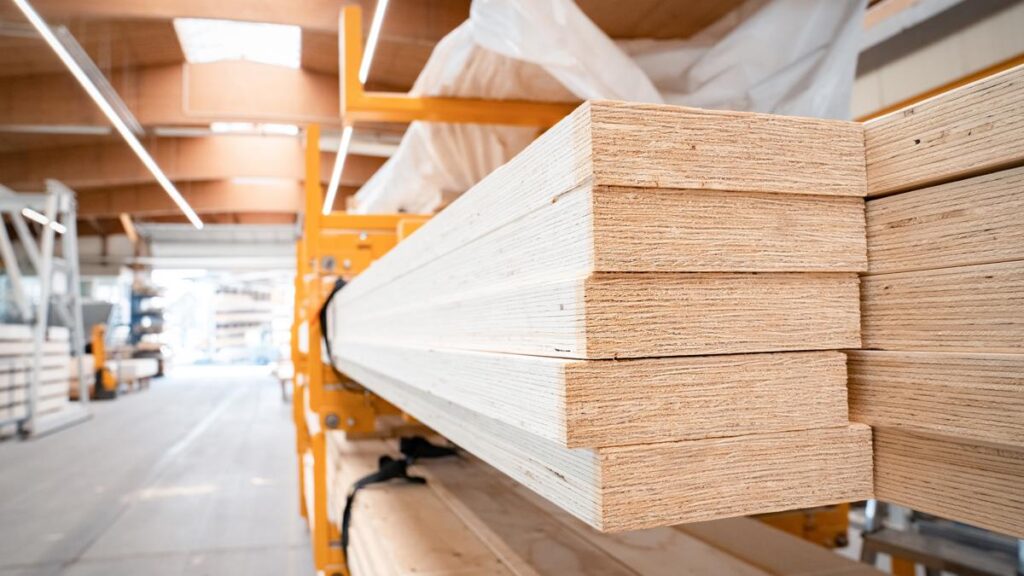Exploring the Benefits of LVL Formwork Timber for Builders

In the ever-evolving field of construction, builders are always seeking materials that offer a blend of strength, durability, and versatility. One such innovative material that has gained traction in recent years is LVL (Laminated Veneer Lumber) formwork timber. This article explores the multifaceted benefits of LVL formwork timber, shedding light on its properties, advantages, cost-effectiveness, safety considerations, and comparisons with traditional materials.
Understanding LVL Formwork Timber
LVL formwork timber is a type of engineered wood product made from thin sheets of wood veneers that are glued together under heat and pressure. This construction method creates a strong, stable, and reliable material that is increasingly used in various construction applications, particularly in formwork setups.
What is LVL Formwork Timber?
As an engineered wood product, LVL formwork timber is manufactured by bonding together multiple layers of wood veneers. The result is a robust material that exhibits superior strength and stability compared to traditional solid timber. Its design minimizes defects like knots and warping, making it an ideal choice for load-bearing applications.
LVL is especially popular in formwork systems because it provides a reliable framework for pouring concrete, ensuring the structure maintains its shape and integrity during the curing process. The uniformity of LVL timber allows builders to achieve precise dimensions and finish in their projects. Furthermore, its lightweight nature compared to concrete or steel alternatives makes it easier to handle and install, reducing labor costs and improving overall efficiency on the job site.

The Manufacturing Process of LVL Formwork Timber
The manufacturing process of LVL involves several essential steps to ensure high-quality output. First, logs are debarked and cut into sheets. These sheets are then dried to a specific moisture content to enhance adhesion. Once dried, they are layered in either vertical or horizontal orientations, depending on the intended strength requirement.
Adhesives are applied, and the layers are pressed together under high pressure. This process not only ensures strong bonding but also allows for the wood to be shaped and molded into desired dimensions. After pressing, the LVL timber undergoes further treatment to enhance its durability, including processes to improve its resistance to moisture and pests. Additionally, the final product is often subjected to rigorous quality control measures, including stress testing and visual inspections, to guarantee that it meets industry standards for safety and performance.
Moreover, the sustainability aspect of LVL formwork timber cannot be overlooked. Since it is produced from renewable resources and can utilize smaller logs that might otherwise go to waste, it presents an environmentally friendly alternative to traditional building materials. Many manufacturers source their wood from sustainably managed forests, ensuring that the production of LVL timber contributes positively to ecological balance while meeting the growing demand for construction materials.
Key Advantages of Using LVL Formwork Timber
Choosing LVL for formwork brings a multitude of advantages to construction projects. Understanding these benefits can help builders make informed choices and improve their project’s overall effectiveness.
Durability and Strength
One of the primary advantages of LVL formwork timber is its remarkable durability and strength. Because it is manufactured in a controlled environment, LVL exhibits excellent resistance to warping and splitting. Its engineered composition provides enhanced load-bearing capacity, making it a preferred choice for heavy-duty applications.
The consistent quality of LVL reduces the risk of failure in structural applications, which is critical for the safety and longevity of any construction project. Builders can be confident that LVL will perform optimally, even under demanding conditions. Additionally, LVL’s ability to withstand high moisture levels without compromising its structural integrity makes it ideal for use in various climates, ensuring that projects remain on schedule regardless of environmental challenges. Learn more about integrity at https://integrity.mit.edu/
Versatility in Construction
LVL formwork timber’s versatility cannot be overstated. It can be used in various applications beyond concrete formwork, such as beams, joists, and structural framing. This adaptability makes it suitable for both residential and commercial projects.
Moreover, LVL can be easily cut, shaped, and customized according to specific project requirements, ensuring that builders can tailor their solutions to fit unique design challenges. This flexibility allows for innovative architectural designs and efficient construction processes. The lightweight nature of LVL also facilitates easier handling and installation, reducing labor costs and time on site, which can be a significant advantage for busy construction schedules.
Environmental Impact
In today’s environmentally conscious world, the choice of materials significantly impacts sustainable construction practices. LVL is often sourced from sustainably managed forests, and its manufacturing process can be more environmentally friendly than that of traditional concrete or steel materials.
Moreover, because LVL utilizes smaller logs and veneer layers, it maximizes the use of wood resources. This efficient use of materials leads to reduced waste, making LVL a more sustainable choice. Builders opting for LVL formwork contribute to environmental conservation efforts while maintaining high-quality construction standards. Furthermore, LVL’s ability to sequester carbon throughout its lifecycle adds an additional layer of environmental benefit, making it an attractive option for projects aiming for green certification or those simply looking to minimize their ecological footprint.
Cost Efficiency of LVL Formwork Timber
Cost is always a crucial factor in construction projects. LVL formwork timber presents several dimensions of cost efficiency that builders must consider when planning their projects.
Initial Purchase and Installation Costs
LVL formwork timber is competitively priced in the market compared to traditional materials like concrete or steel. The initial purchase cost can often be lower, particularly when project budgets are tightened. Additionally, LVL’s lightweight nature simplifies transport and handling, leading to savings in logistics and labor costs during installation.
The ease of installation also plays a significant role in cost efficiency. LVL components can be assembled quickly, reducing labor time and associated expenses. For builders, faster installation translates to shorter project timelines and the opportunity for quicker returns on investment. Moreover, the precision manufacturing process of LVL means that components fit together seamlessly, minimizing the need for extensive adjustments or modifications on-site, which can further drive down costs. To find more about manufacturing click here.
Long-term Maintenance and Replacement Costs
In addition to lower initial costs, LVL also proves to be economical in the long run. Its durability translates to reduced maintenance costs, as there are fewer repairs or replacements required over the lifespan of the material.
Unlike traditional timber, which may be prone to decay or insect damage, LVL’s engineered structure offers enhanced longevity. Builders can be confident that their investment in LVL will pay off through its extended lifespan, translating into significant savings over time. Furthermore, the consistent quality of LVL means that it performs reliably under various environmental conditions, reducing the risk of unexpected failures that could lead to costly repairs or project delays. This resilience not only contributes to cost savings but also enhances the overall safety and integrity of the construction, providing peace of mind for builders and stakeholders alike.
Safety Considerations for LVL Formwork Timber
While LVL formwork timber offers numerous benefits, safety must always be a primary concern for builders. Understanding the safety features inherent in LVL products is essential for their effective and safe use on construction sites.
Resistance to Fire and Pests
One significant attribute of LVL is its treatment process, which can include fire-retardant chemicals to enhance safety in case of potential fire hazards. Although LVL is not completely fireproof, these treatments can slow down the spread of flames, providing critical time for evacuation and fire management.
Furthermore, LVL is often treated to resist pests like termites and wood-boring insects, addressing a common concern in traditional timber use. This added layer of protection promotes a safer building environment and ensures the integrity of the structure. Additionally, the consistent quality and uniformity of LVL mean that builders can rely on its performance, reducing the likelihood of unexpected failures that could compromise safety.
Handling and Storage Safety
Like all construction materials, the handling and storage of LVL require careful consideration. Being lightweight compared to other materials does make LVL much easier to manage; however, mismanagement can lead to accidents.
Builders should follow best practices in storing LVL to protect it from moisture and damage, such as keeping it elevated off the ground and covered to prevent water exposure. Proper training for workers in handling LVL can further mitigate risks, ensuring they understand the best practices for loading, unloading, and installing the material safely. Moreover, implementing a system for regular inspections of stored LVL can help identify any signs of wear or damage early, allowing for proactive measures to be taken before issues escalate into safety hazards. This vigilance not only protects the workers but also enhances the overall durability and longevity of the formwork system.
LVL Formwork Timber vs. Traditional Materials
When looking at the entire spectrum of construction materials, it’s essential to understand how LVL stands in comparison to traditional formwork materials, such as concrete and steel. These comparisons can guide builders in making informed decisions regarding material selection.
Comparison with Concrete Formwork
Concrete formwork is often considered a benchmark in the industry due to its strength; however, it comes with significant challenges such as high weight, difficulty in handling, and prolonged curing times. In contrast, LVL beam forms are lightweight, facilitating faster assembly and disassembly.
Additionally, LVL can lead to smoother finishes on exposed concrete surfaces, thus minimizing the need for extensive finishing work post-cure, which can save time and money. Considering the on-site labor requirements, LVL’s efficiency can drastically affect overall project schedules positively. Moreover, the environmental impact of using LVL is often less than that of concrete, as timber is a renewable resource, and the production process generates fewer carbon emissions. This sustainability aspect is becoming increasingly important to builders and clients alike, who are looking to minimize their ecological footprint.

Comparison with Steel Formwork
Steel formwork offers some compelling mechanical properties but poses challenges such as additional weight and corrosion concerns. The cost of manufacturing and transporting steel can also prove significant.
On the other hand, LVL timber provides comparable rigidity and strength at a fraction of the weight, making it easier to manage. Additionally, the aesthetic appeal of wood compared to steel can also be a factor for certain projects, particularly in residential or timber-framed builds. The natural warmth and beauty of wood can enhance the overall design of a structure, making it more inviting and visually appealing. Furthermore, LVL’s ability to be treated for fire resistance adds another layer of safety, addressing concerns that often accompany timber materials. The choice ultimately depends on project needs, but LVL remains a strong contender in the formwork materials landscape.
As the construction industry evolves, the integration of advanced technologies such as prefabrication and modular construction is becoming more prevalent. LVL’s adaptability to these methods allows for quicker project turnaround times and reduced waste, aligning perfectly with modern construction practices. Builders are increasingly recognizing the potential of LVL not just as a formwork solution but as a versatile material that can be used throughout various stages of construction, further solidifying its position in the market.
Other resources: LVL Formwork A Strong and Reliable Solution for Construction Projects

Leave a Reply